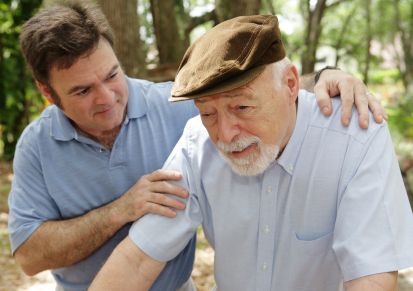Article
Back Pain Has Negative Physical, Psychological, and Social Impact on Older Adults
Author(s):
The most common type of pain among older adults is back pain, yet its impact on the everyday lives of individuals is often not considered. The physical, psychological, and social influence of activity restrictive back pain need to be measured when evaluating treatment for back pain.
The most common type of pain among older adults is back pain, yet its impact on the everyday lives of individuals is often not considered. The physical, psychological, and social influence of activity restrictive back pain need to be measured when evaluating treatment for back pain.
In a study published in Pain Medicine, researchers collected data from adults, at least 65 years old, who experienced back pain that restricts their activity and had participated in previous chronic pain studies. The participants were involved in in-depth interviews and focus groups.
The interviews were conducted in the participants’ home and lasted an average of 45 minutes. The participants were asked a variety of open-ended questions that were intended to reveal how back pain has impacted their lives physically, emotionally, socially, personally, and their overall quality of life. The focus groups targeted the same topics through facilitated discussions among 3 to 7 participants and usually lasted for 30 to 60 minutes.
A total of 93 individuals participated in 16 focus groups and 23 interviews. More than half (55%) of the participants reported episodes of restricting back pain for 10 years or longer, while another 26% reported experiencing it over the past 5 to 10 years. Furthermore, 82% of the patients previously or were currently using an oral pain medication, 19% attempted topical therapies, 74% had used a combination of non-pharmacologic strategies, and 58% reported the use of hot/cold modalities in attempt to alleviate pain.
The focus group and interview results also exemplified the negative impacts of back pain on individuals’ everyday lives. The factors that negatively influenced the patients’ lives include:
- Physical: Participants were unable to fulfill routine tasks and often experienced disrupted sleep and exercise levels.
- Emotional: Participants often experienced anxiety, depression, irritability, and loss of hope.
- Social: Participants would feel isolated and unable to engage in their previous hobbies.
“Our results underscore the necessity of measuring the appropriate outcomes in research and in clinical practice,” wrote the researchers. “Further, by focusing on impacts and outcomes of importance to older adults with restricting back pain, researchers may develop interventions that are age-appropriate, relevant and of importance to older adults with this common condition.”
The results reveal specific areas where back pain directly affects an older person’s life. This can help providers and physicians adjust their approaches for care to best treat their patient’s needs.
“Likewise, older adults in our study describe the diverse impacts of back pain that disrupt their quality of life in ways that may not be adequately recognized by providers, including feelings of isolation and depression resulting from an inability to engage in previously enjoyed hobbies and social activities, and fears of physical deterioration,” the authors concluded.

Incorporating Discussions of Cannabis Use Into Oncology Care Visits

How Patients Think About Pain May Impact Activity Levels, Study Says

Incorporating Discussions of Cannabis Use Into Oncology Care Visits

How Patients Think About Pain May Impact Activity Levels, Study Says
2 Commerce Drive
Suite 100
Cranbury, NJ 08512
© 2025 MJH Life Sciences® and AJMC®.
All rights reserved.

